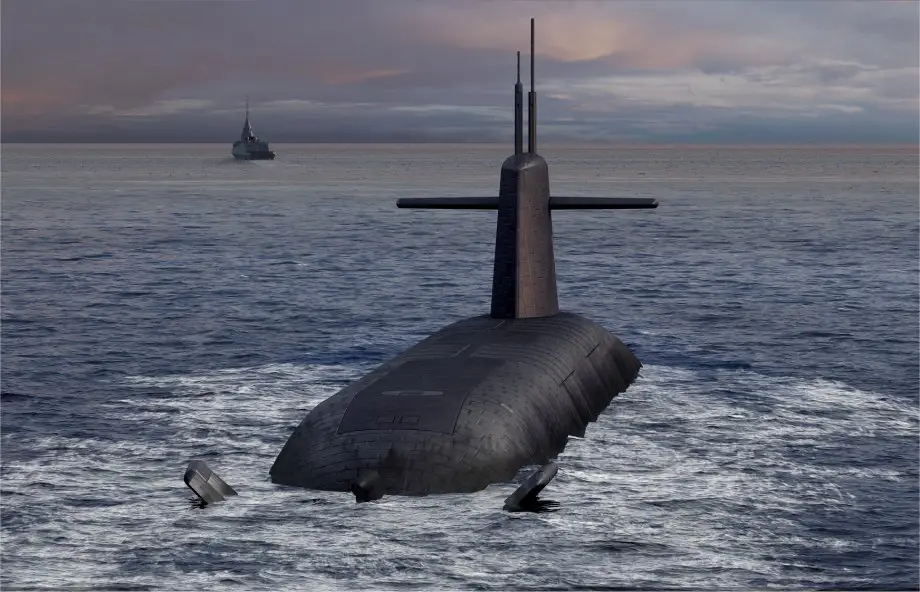Breaking news
Naval Group begins construction of France's 3rd-gen nuclear submarines SNLE 3G.
According to a PR published by Naval Group on March 20, 2024, France has initiated the construction of its first third-generation nuclear-powered ballistic missile submarine (SSBN 3G).
Follow Navy Recognition on Google News at this link
 Artist rendering of the future third-generation nuclear-powered ballistic missile submarine. (Picture source: Naval Group)
Artist rendering of the future third-generation nuclear-powered ballistic missile submarine. (Picture source: Naval Group)
The groundbreaking ceremony, marking the commencement of this project, was held in Cherbourg's shipyard, featuring the ceremonial cutting of the first steel plate. This event was attended by key figures including Emmanuel Chiva, the General Delegate for Armament, Admiral Nicolas Vaujour, Chief of Staff of the Navy, General Vincent Pons, Deputy Chief of Staff "Plans" of the armed forces, along with Pierre Eric Pommellet and Loïc Rocard, CEOs of Naval Group and TechnicAtome respectively.
The construction, led by Naval Group with TechnicAtome co-managing the nuclear reactors, is a crucial part of France's military programming law (LPM) for 2024-2030. It envisions the replacement of the current second-generation Le Triomphant-class submarines with four state-of-the-art SSBN 3G vessels over the next decade. Currently, France operates four "Le Triomphant"-class SSBNs, each equipped with 16 M51 strategic ballistic missiles carrying nuclear warheads.
M51 Missile
The M51 missile, weighing 52,000 kg and measuring 12.0 meters in length with a diameter of 2.3 meters, is a significant component of modern strategic weaponry. It is propelled by a three-stage solid-fuel rocket, specifically using ammonium perchlorate composite propellant, allowing for an impressive operational range estimated between 8,000 to 10,000 km, although exact figures remain classified.
Capable of reaching speeds up to Mach 25, the M51 showcases advanced guidance technology through astro-inertial systems, with plans to incorporate the Galileo system for enhanced accuracy.
This missile's warhead configurations have evolved over time, starting with the M51.1 variant, equipped with a 6 to 10 TN 75 MIRV 110 kiloton yield, complemented by penetration aids for enhanced effectiveness.
In 2015, the M51.2 variant was introduced, marking a significant upgrade with the integration of the Tête nucléaire océanique, offering yields of 100 kilotons and later, an enhanced version boasting 300 kilotons, both aiming for a Circular Error Probable (CEP) between 150 to 200 meters.


























